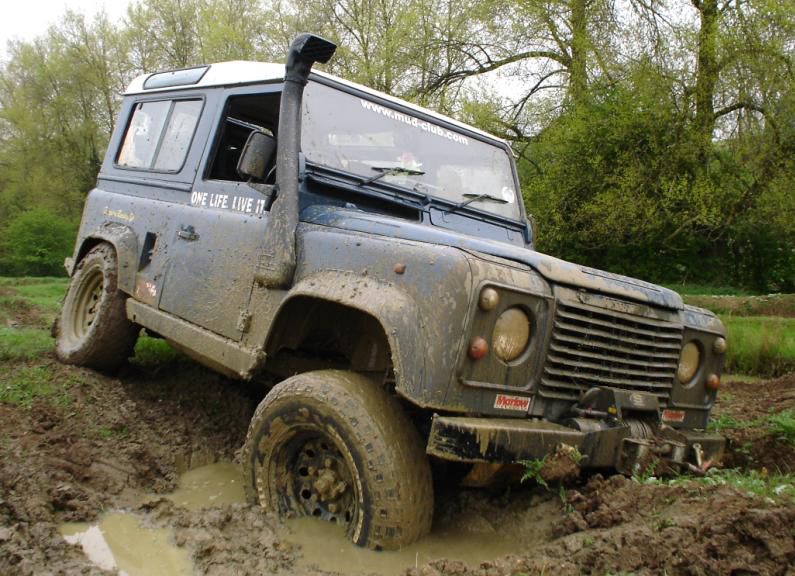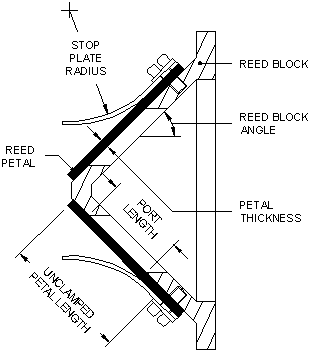|
YZ85 Yamaha
The Yamaha YZ 85 is a motorcycle designed specifically for off-road and Motorcross racing. 85 It is powered by an 84.7 cc single-cylinder, water-cooled, two-stroke A two-stroke (or two-stroke cycle) engine is a type of internal combustion engine that completes a power cycle with two strokes (up and down movements) of the piston during one power cycle, this power cycle being completed in one revolution of ..., reed valve inducted engine and uses a 6-speed, constant-mesh, manual gearbox; with a multi-plate, wet- clutch. There are two wheel options – large wheel, with a 19-inch front and 16-inch rear; and small wheel, with a 17-inch front and 14-inch rear. It weighs 157 lbs (wet). References Yamaha motorcycles Two-stroke motorcycles {{motorcycle-stub sv:Yamaha YZ85 ... [...More Info...] [...Related Items...] OR: [Wikipedia] [Google] [Baidu] |
Motorcycle
A motorcycle (motorbike, bike, or trike (if three-wheeled)) is a two or three-wheeled motor vehicle steered by a handlebar. Motorcycle design varies greatly to suit a range of different purposes: long-distance travel, commuting, cruising, sport (including racing), and off-road riding. Motorcycling is riding a motorcycle and being involved in other related social activity such as joining a motorcycle club and attending motorcycle rallies. The 1885 Daimler Reitwagen made by Gottlieb Daimler and Wilhelm Maybach in Germany was the first internal combustion, petroleum-fueled motorcycle. In 1894, Hildebrand & Wolfmüller became the first series production motorcycle. Globally, motorcycles are comparably popular to cars as a method of transport. In 2021, approximately 58.6 million new motorcycles were sold around the world, fewer than the 66.7 million cars sold over the same period. In 2014, the three top motorcycle producers globally by volume were Honda (28%), Yamaha (17 ... [...More Info...] [...Related Items...] OR: [Wikipedia] [Google] [Baidu] |
Off-road
Off-roading is the activity of driving or riding in a vehicle on unpaved surfaces such as sand, gravel, riverbeds, mud, snow, rocks, and other natural terrain. Types of off-roading range in intensity, from leisure drives with unmodified vehicles, to competitions with customised vehicles and professional drivers. Off-roaders have been met with criticism for the environmental damage caused by their vehicles. There have also been extensive debates over the role of government in regulating the sport, including a Supreme Court case brought against the Bureau of Land Management in the United States. Off-road vehicle Travelling over difficult terrain requires vehicles capable of off-road driving such as ATVs. These vehicles have features designed specifically for use in off-road conditions such as extended ground clearance, off-road tires and a strengthened drive-train. Some manufacturers offer vehicles specifically designed for off-road use. Recreational off-roading Some ex ... [...More Info...] [...Related Items...] OR: [Wikipedia] [Google] [Baidu] |
Motorcross
Motocross is a form of off-road motorcycle racing held on enclosed off-road circuits. The sport evolved from motorcycle trials competitions held in the United Kingdom. History Motocross first evolved in Britain from motorcycle trials competitions, such as the Auto-Cycle Clubs's first quarterly trial in 1909 and the Scottish Six Days Trial that began in 1912. When organisers dispensed with delicate balancing and strict scoring of trials in favour of a race to become the fastest rider to the finish, the activity became known as "hare scrambles", said to have originated in the phrase, "a rare old scramble" describing one such early race. Though known as scrambles racing (or just scrambles) in the United Kingdom, the sport grew in popularity and the competitions became known internationally as "motocross racing", by combining the French word for motorcycle, ''motocyclette'', or ''moto'' for short, into a portmanteau with "cross country". The first known scramble race took place at ... [...More Info...] [...Related Items...] OR: [Wikipedia] [Google] [Baidu] |
Single-cylinder
A single-cylinder engine, sometimes called a thumper, is a piston engine with one cylinder. This engine is often used for motorcycles, motor scooters, go-karts, all-terrain vehicles, radio-controlled vehicles, portable tools and garden machinery (such as lawnmowers, cultivators, and string trimmers). Single-cylinder engines are made both as 4-strokes and 2-strokes. Characteristics Compared with multi-cylinder engines, single-cylinder engines are usually simpler and compact. Due to the greater potential for airflow around all sides of the cylinder, air cooling is often more effective for single cylinder engines than multi-cylinder engines. This reduces the weight and complexity of air-cooled single-cylinder engines, compared with liquid-cooled engines. Drawbacks of single-cylinder engines include a more pulsating power delivery through each cycle and higher levels of vibration. The uneven power delivery means that often a single-cylinder engine requires a heavier flywheel than a ... [...More Info...] [...Related Items...] OR: [Wikipedia] [Google] [Baidu] |
Water-cooled
Cooling tower and water discharge of a nuclear power plant Water cooling is a method of heat removal from components and industrial equipment. Evaporative cooling using water is often more efficient than air cooling. Water is inexpensive and non-toxic; however, it can contain impurities and cause corrosion. Water cooling is commonly used for cooling automobile internal combustion engines and power stations. Water coolers utilising convective heat transfer are used inside high-end personal computers to lower the temperature of CPUs. Other uses include the cooling of lubricant oil in pumps; for cooling purposes in heat exchangers; for cooling buildings in HVAC and in chillers. Mechanism Advantages Water is inexpensive, non-toxic, and available over most of the earth's surface. Liquid cooling offers higher thermal conductivity than air cooling. Water has unusually high specific heat capacity among commonly available liquids at room temperature and atmospheric pressure allowing ... [...More Info...] [...Related Items...] OR: [Wikipedia] [Google] [Baidu] |
Two-stroke
A two-stroke (or two-stroke cycle) engine is a type of internal combustion engine that completes a Thermodynamic power cycle, power cycle with two strokes (up and down movements) of the piston during one power cycle, this power cycle being completed in one revolution of the crankshaft. A four-stroke engine requires four strokes of the piston to complete a power cycle during two crankshaft revolutions. In a two-stroke engine, the end of the combustion stroke and the beginning of the compression stroke happen simultaneously, with the intake and exhaust (or Scavenging (automotive), scavenging) functions occurring at the same time. Two-stroke engines often have a high power-to-weight ratio, power being available in a narrow range of rotational speeds called the power band. Two-stroke engines have fewer moving parts than four-stroke engines. History The first commercial two-stroke engine involving cylinder compression is attributed to Scotland, Scottish engineer Dugald Clerk, who pa ... [...More Info...] [...Related Items...] OR: [Wikipedia] [Google] [Baidu] |
Reed Valve
Reed valves are a type of check valve which restrict the flow of fluids to a single direction, opening and closing under changing pressure on each face. Modern versions often consist of flexible metal or composite materials (fiberglass or carbon fiber). Applications Traditional Reed valves, normally a leather flap covering a hole, are amongst the earliest form of automatic flow control for liquids and gases. They have been used for thousands of years in water pumps and for hundreds of years in bellows for high-temperature forges and musical instruments such as church organs and accordions. In nature, heart valves operate in a somewhat similar fashion. Pumps Reed valves are used in some reciprocating compressor designs, and in the pumping element of some musical instruments, large and small. Two-stroke engines Reed valves are commonly used in high-performance versions of the two-stroke engine, where they control the fuel-air mixture admitted to the cylinder. As the piston ri ... [...More Info...] [...Related Items...] OR: [Wikipedia] [Google] [Baidu] |
Clutch
A clutch is a mechanical device that engages and disengages power transmission, especially from a drive shaft to a driven shaft. In the simplest application, clutches connect and disconnect two rotating shafts (drive shafts or line shafts). In these devices, one shaft is typically attached to an engine or other power unit (the driving member), while the other shaft (the driven member) provides output power for work. Typically the motions involved are rotary, but linear clutches also exist. In a motor vehicle, the clutch acts as a mechanical linkage between the engine and transmission, and briefly disconnects, or separates the engine from the transmission system. This disconnects the drive wheels whenever the clutch pedal is depressed, allowing the driver to smoothly change gears. In a torque-controlled drill, for instance, one shaft is driven by a motor, and the other drives a drill chuck. The clutch connects the two shafts so they may be locked together and spin at the ... [...More Info...] [...Related Items...] OR: [Wikipedia] [Google] [Baidu] |
Yamaha Motorcycles
List of motorcycles manufactured by Yamaha Motor Company. First bikes * YA-1 built August 1954, produced January 1955. The first bike manufactured by Yamaha was actually a copy of the German DKW RT 125; it had an air-cooled, two-stroke, single cylinder 125 cc engine *YC-1 (1956) was the second bike manufactured by Yamaha; it was a 175 cc single cylinder two-stroke. * YD-1 (1957) Yamaha began production of its first 250 cc, two-stroke twin, the YD1. *MF-1 (1958) 50 cc, two-stroke, single cylinder, step through street bike *YDS-3 (1964) 246 cc, two-stroke, parallel-twin, it used the world's first oil injection lubrication system in a 2-stroke engine. * DT-1 (1968) Yamaha's first true off-road motorcycle. * XS-1 (1970) Yamaha's first four-stroke engine motorcycle (650 cc twin).http://www.yamaha-motor.com/corporate/historytimeline.aspx , Yamaha website timeline, accessed October 2, 2011 * Yamaha YZ Monocross (1975) First production motocross bike with a ... [...More Info...] [...Related Items...] OR: [Wikipedia] [Google] [Baidu] |
Two-stroke Motorcycles
A two-stroke (or two-stroke cycle) engine is a type of internal combustion engine that completes a Thermodynamic power cycle, power cycle with two strokes (up and down movements) of the piston during one power cycle, this power cycle being completed in one revolution of the crankshaft. A four-stroke engine requires four strokes of the piston to complete a power cycle during two crankshaft revolutions. In a two-stroke engine, the end of the combustion stroke and the beginning of the compression stroke happen simultaneously, with the intake and exhaust (or Scavenging (automotive), scavenging) functions occurring at the same time. Two-stroke engines often have a high power-to-weight ratio, power being available in a narrow range of rotational speeds called the power band. Two-stroke engines have fewer moving parts than four-stroke engines. History The first commercial two-stroke engine involving cylinder compression is attributed to Scotland, Scottish engineer Dugald Clerk, who pa ... [...More Info...] [...Related Items...] OR: [Wikipedia] [Google] [Baidu] |






